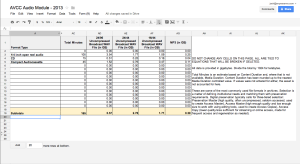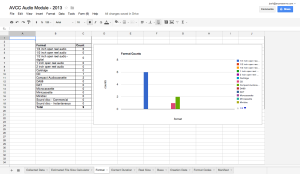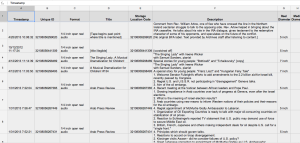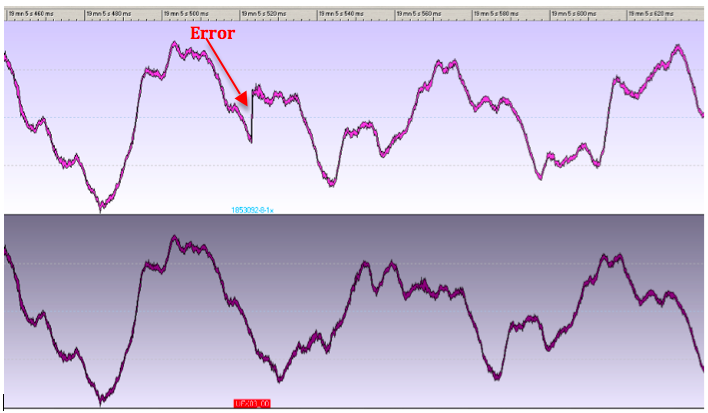Watching Movies In A Theatre Is Not Always Watching Movies
6 September 2013
Thanks to Luke McKernan’s Picturegoing blog for inspiring this post.
For those who have met me after I moved to New York it may be surprising to hear that one of the things I was most excited about when moving here was the cinemas. Except for the brief college years when campus repertory was an option, I had always lived in places where we had to wait weeks (or months) for some movies to come to town, and independent or foreign cinema was relegated to whatever Miramax decided to release out of their hoarding vaults. But now, now I was going to get to see everything the first week of its oscar-baiting or platformed release, in addition to whatever oddity or re-release hit the theatre for a day or week.
My first weekend in town not taken up with moving was Labor Day weekend, and I plotted a multi-theatre extravaganza for that Monday, including The Aristocrats, Broken Flowers, and Grizzly Man. And to boot, I was fitting everything in before 5:00. Matinee tickets all around, yo.
But in a shocking blow to my fond memories of beating the system when picturegoing (see also: how long can I pretend I’m 12 years old?) I discovered that most NYC movie theatres do not have matinee pricing, and I shelled out 13 bucks for each flick. Having just studied the 19th century dramatic genre of plays dealing with the corrupting influence of cities I should have been more prepared, but, man, New York steals your innocence fast…Probably because they charge more for doing so.
***
From that point on through attending theatres with too-small screens and seats of questionably cleanliness, movies that sell out five hours in advance, and dealing with long time cinephiles who stand above you staring and breathing loudly as they try to figure out what to do because you have sat in “their” seat, my New York cinema experience was — if authentic — not what I had grown up loving about going to the movies. And the going is an important differentiation here. It wasn’t necessarily about the films themselves (I could watch Beastmaster at home just about any time and be happy), but something about the process of going to the cinema and the feeling around it. Being a young man of limited means in a small town, this almost exclusively meant matinees and double features. How else would I also have money for that box of stale Red Vines it would take me hours to gnaw through? And except for the odd drive-in, it also exclusively meant multiplex viewing…If four screens counts as multi. (Like I says, small town.)
As a result of this I mainly watched movies during the day in mostly empty theatres (unless four people actually does count as empty) for the finest PG and PG-13 comedies of the 1980s, and also got to see some accidentally avant-garde double feature pairings. An early one I recall was Snow White (back during the rise of home video when Disney still had a regular-ish re-rerelease schedule for their animated films) and the fear-computers-as-much-as-the-Soviets classic War Games. (Theme: Eh, kids will like both of these.)
The perfect convergence of the empty theatre and double feature came with Big Top Pee-Wee and Short Circuit 2. (Theme: Nobody is watching these, so let’s free up a screen for something else.). The vivid memory I have isn’t anything from the movies themselves, but standing to buy my Mambas and Dr. Pepper and then hearing a loud, sustained laugh coming from the theatre. I thought I was late and someone was already enjoying that hilarious robot’s antics, so I rushed inside. Turns out the room was completely empty. The previews had started, and the booming laughter was from a trailer for the Tom Hanks/Sally Fields film Punchline, a trailer which was merely audio of a single person laughing for an extended period combined with an image and some text.
***
One of the things I grapple with frequently as a media archivist is the issue of how we engage with media, and how that impacts the preservation and presentation of materials. It has begun to gel for me in a way that this engagement is one of constant change, change that is both imperceptible and mired in nostalgia.
Not imperceptible immediately, but over time as we get used to change and forget those shifts. The same way when you see a child every day and do not notice changes in height or maturity as you would if you only saw that child once a year. I think about something like newspaper design. Every Sunday I read the Times Magazine, and every so often they change the fonts, column spacing, and other layout designs. At first those changes are jarring, and I’m not so sure I like them because it seems so much harder to read, but after a few weeks I get used to it and forget what the old design was even like.
But mired in nostalgia because of external experiential factors that surround our engagement. In the case of the Times Magazine, I may not remember articles, but I get out-of-sorts if I miss that quiet, lazy weekend morning with a cup of coffee. For me personally that nostalgia of cinema is not film versus digital or big screen versus small screen, but that feeling of indulgence and slight surreptitiousness: watching not particularly great movies in the middle of the day (or middle of the night), mostly alone, with something delicious to imbibe. Perhaps this even goes back to my original engagement with films, which was on television, and frequently involved me pretending to be sick so I could stay home from school and watch Universal Horror or Godzilla movies.
Picturegoing in New York has never hit this particular treat bar, but the toy train hobby of my adulthood has recreated it — sitting down on a Saturday afternoon with a glass of whisk(e)y and some B-movie or foreign action film on DVD or streaming. I don’t disagree that it would be a different (and perhaps better) visual and aural experience projected in a theatre, but being on the East Coast now, the theatre would probably sell mushy Twizzlers instead of Red Vines.
They just don’t make movies like they used to.
— Joshua Ranger
AVPreserve, METRO Release Audiovisual Cataloging & Reporting Tool
4 September 2013
AVPreserve announces the Beta release of the AVCC Cataloging Tool and Reporting Modules in conjunction with The Metropolitan New York Library Council’s (METRO) Keeping Collections Project. The tool is offered as a free resource to help archives manage, preserve, and create access to their collections.
AVCC is a set of forms and guidelines developed to enable efficient item-level cataloging of audiovisual collections. Each module (Audio, Video, Film) includes individualized data entry forms and reports that quantify information such as format types, base types, target format sizes, and other data critical to prioritizing and planning preservation work with audiovisual materials.




Based on years of experience with how audiovisual collections are typically labeled and stored, AVCC establishes a minimal set of required and recommended fields for basic intellectual control that are not entirely dependent on playback and labeling, along with deeper descriptive fields that can be enhanced as content becomes accessible. The focus of of AVCC is two-fold: to uncover hidden collections via record creation and to support preservation reformatting in order to enable access to the content itself.
More information and a request form for access to your own module is available through the METRO Keeping Collections website at http://keepingcollections.org/avcc-cataloging-toolkit/. AVCC is currently in Beta form and has been designed in Google Docs. Currently only the Audio and Video modules are available. The development of a more stable web-based database utility is anticipated in early 2014, and your feedback in testing this current version will help. Please direct any questions to AVPreserve Senior Consultant Josh Ranger via the AVCC or avpreserve.com contact forms.
AVCC was developed by AudioVisual Preservation Solutions with support from The Metropolitan New York Library Council (METRO) Keeping Collections project. Keeping Collections was launched to ensure the sustainability and accessibility of New York State’s archival collections as part of the New York State Archives Documentary Heritage Program. Keeping Collections provides a variety of free and affordable services to any not-for-profit organization in the metropolitan New York area that collects, maintains, and provides access to archival materials.AVCC is licensed under the Creative Commons Attribution-NonCommercial-ShareAlike 3.0 Unported License. To view a copy of this license, visit http://creativecommons.org/licenses/by-nc-sa/3.0/ or send a letter to Creative Commons, 444 Castro Street, Suite 900, Mountain View, California, 94041, USA.AVCC ©2013 AudioVisual Preservation Solutions, Inc.
AVPreserve Releases Interstitial – Free Error Detection Tool
3 September 2013
AVPreserve is pleased to announce the release of interstitial, a new tool designed to detect dropped samples in audio digitization processes. These dropped samples are caused by fleeting interruptions in the hardware/software pipeline on a digital audio workstation. The Interstitial tool Follows up on our work with the Federal Agencies Digitization Guidelines Initiative (FADGI) to define and study the issue of Audio Interstitial Errors.
interstitial compares two streams of digitized audio captured to a digital audio workstation and a secondary reference device. Irregularities that appear in the workstation stream and not in the other point to issues like Interstitial Errors that relate to samples lost when writing to disc. This utility will greatly decrease post-digitization quality control time and help further research on this problem.
interstitial is a free tool available for download via GitHub. Visit our Tools page for this and other free resources.
